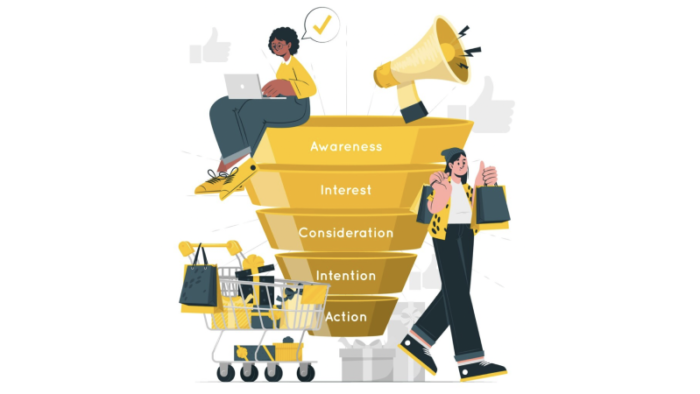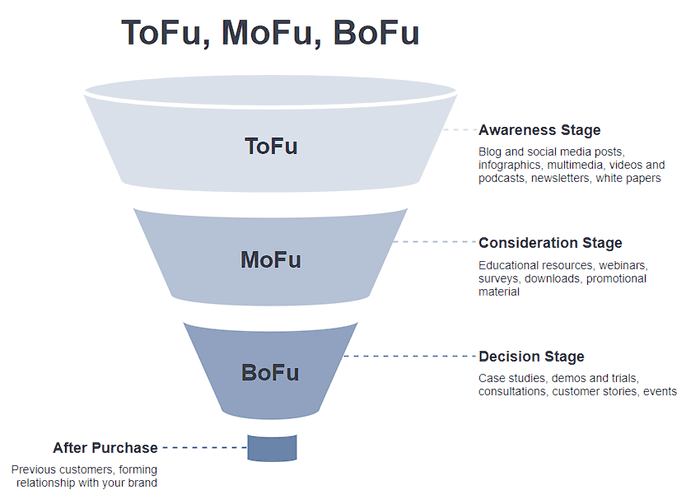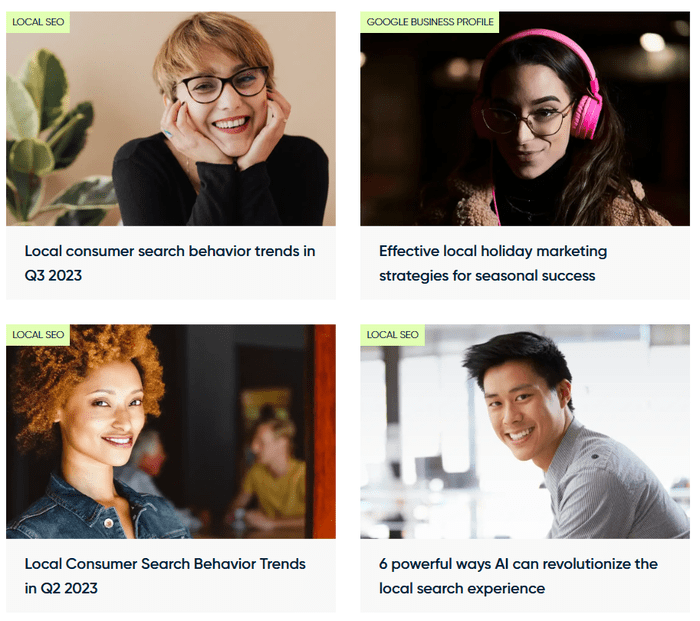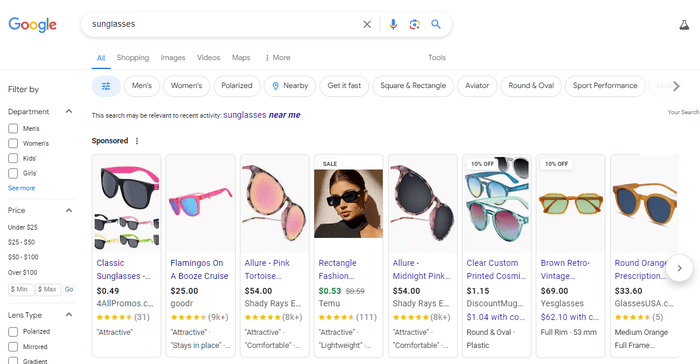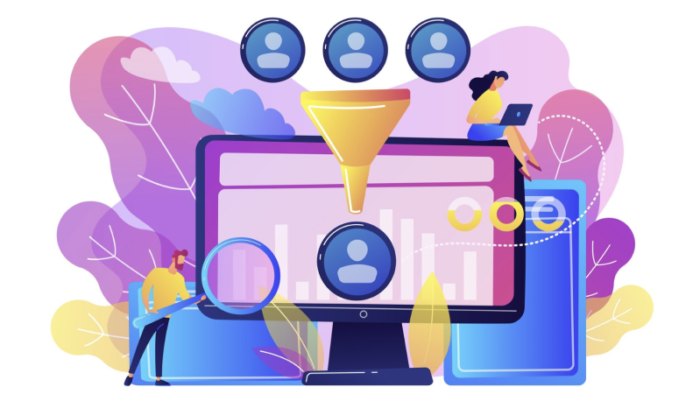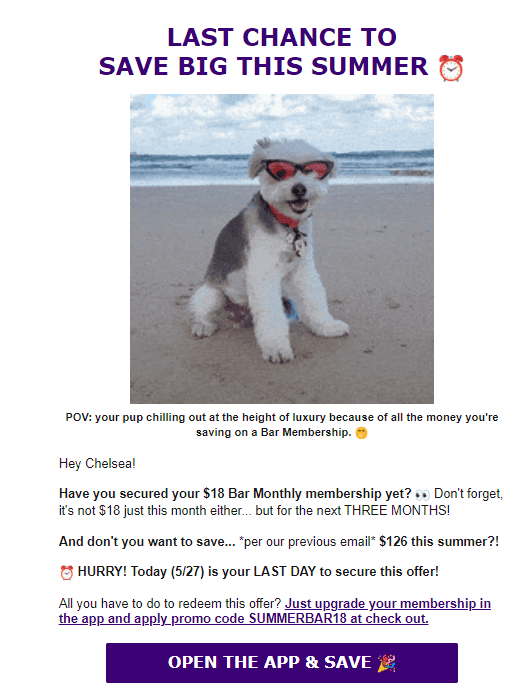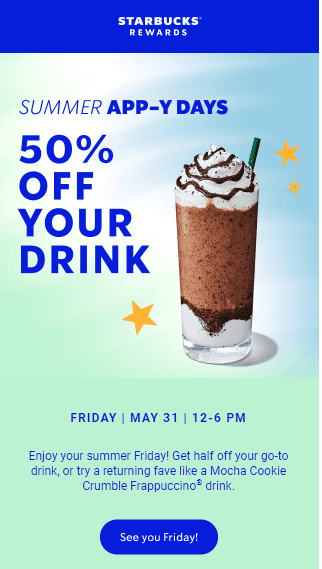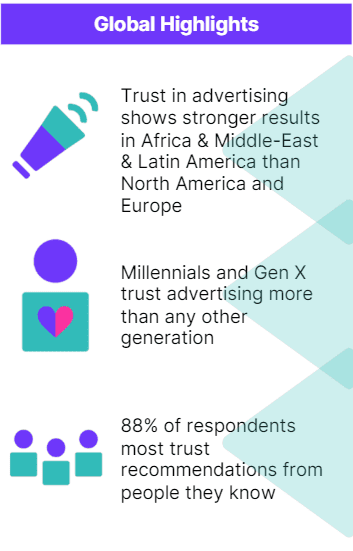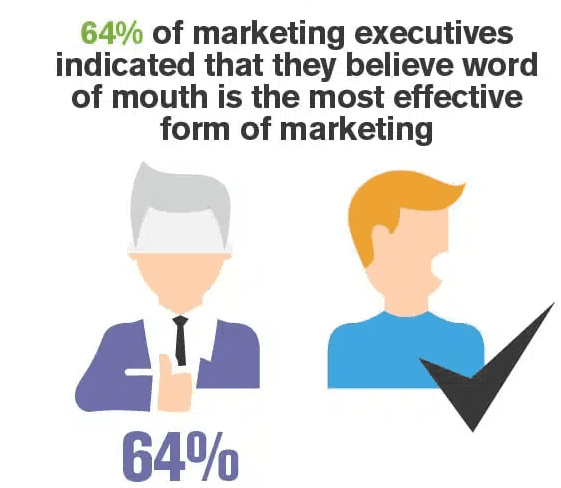Full-Funnel Content Strategy: The Integrated Marketing Funnel Approach
In this post, we’ll dissect every stage of the marketing funnel, helping you build integrated marketing communications into your strategy that helps to guide customers through the diverse stages of your funnel.
You’ll walk away with the tools and knowledge necessary to refine your current marketing funnel strategy to drive more sales and better customer retention.
An integrated marketing funnel is a comprehensive, strategic endeavor that combines multiple marketing channels and efforts to seamlessly guide customers down the marketing funnel.
Imagine marketing to an audience who has a deep understanding of your business’ products and services, yet targeting them with awareness stage language.
The value your business provides its customers would undoubtedly be overlooked as your messaging didn’t align with where the customer was at in the sales journey.
This short example exemplifies the need for a full-funnel marketing approach, irrespective of business category or industry. It provides a strategic framework for meeting customers with relevant and helpful information that helps move them down the sales funnel.
Additionally, this customer-centric strategy helps build longer relationships, trust, and credibility with your potential customers.
It proves your brand understands their unique needs and desires, delivering targeted and personalized communication that aligns with the solution the customer is trying to solve.
For those just getting started in their marketing strategy refinement journey, leveraging UNmiss’s free SEO tools is a great place to start. Tools range from website audits to a high-quality content rewriter.
Integrated Marketing Funnel 101
By implementing an integrated marketing funnel, customers receive consistent messaging and experiences with your business at every stage of their journey—from awareness to decision and beyond.
Rather than a one-size-fits-all approach, potential customers are greeted with targeted communication that remains consistent regardless of where they find your business.
For example, if a customer initially finds your Google Business Profile through a search engine result, your hours of operation on your business listing should align with what customers see on your website.
Research shows that over half (65%) of customers said they have changed to a different brand because of a poor experience. Additionally, a separate study found that 78% of customers have backed out of a purchase due to a poor customer experience.
The cost of a negative experience is lost business, poor brand perception, and fewer customers taking action. An integrated marketing funnel can mitigate these issues by:
- Employing a Multi-Channel Strategy: Showing up where your customers are looking for you (e.g., social media, search engine results pages, email marketing, events, paid ads, and more).
- Keeping Your Messaging Consistent: Ensuring your sales, promotions, and content align and match across all channels. This promotes an optimal customer experience and ensures you build trust with potential customers.
- Monitoring Analytics: Collecting and analyzing campaign and channel performance across every platform to interpret consumer behavior. Find a CRM system that allows for you to integrate the numerous platforms you leverage into one central location for a more transparent view of your results.
- Personalizing Your Content: Customers want to feel like more than just a number. Tailor your content to reflect their unique, individual needs through proper segmenting and considering where they’re at in the funnel.
- Working Well with Cross-Functional Teams: Don’t work in silos. Ensure clear communication between marketing and every department (e.g., sales, customer success, product) to serve your customers better.
The Stages of An Integrated Marketing Funnel
Most traditional integrated marketing funnels entail 6 different stages. Each of these stages is unique and therefore requires different tactics to effectively reach customers and metrics to measure success.
Every stage holds equal importance. Without brand discovery, customers would never be aware your business exists.
Without advocacy, customers won’t return to make repeat purchases with your business.
Here are each of the six stages of the marketing funnel as well as tips for converting consumers at each stage and how to measure your efforts.
Credit: https://online.visual-paradigm.com/
Building Awareness: Top-of-Funnel Strategies (ToFu)
No matter how phenomenal your marketing, business, products, or services may be, not every lead will convert; which is why it’s paramount to cast a wide net and attract a large, qualified audience.
In theory, the more eyes that land on your website or walk through your store, the more purchases that will be made.
Top-of-funnel (ToFu) marketing entails the use of strategies meant to target a wide audience of people who are just becoming aware of your business.
Its primary purpose is to generate new leads by reaching people who are just embarking on their journey with your business.
At this stage, consumers are looking for high-level information about your business, especially as they’re just becoming aware that you exist and are an option.
Optimization at the top of the sales funnel is crucial as this is where consumers determine if they want to move forward with your business and go down the sales funnel.
Example of ToFu content
Exploring Multichannel Marketing Approaches for Generating Brand Awareness
In the awareness phase, consumers are on the hunt for a solution to their problem. They’re often seeking specific information, comparing brands, and determining which business will be best for their needs.
To successfully lead potential customers to the interest stage, you can turn to the following strategies to build brand awareness and trust.
- Content Marketing: Content efforts during this stage should focus on providing information and education about your brand. Use this content to solve a problem, answer a pertinent question, and build your thought leadership in your industry.
- Social Media: Social media can be a great tool to promote brand awareness by sharing your content, creating compelling visuals, and implementing engagement tactics such as polls.
- Search Engine Optimization (SEO): SEO is a key tactic for appearing higher in the search engine results pages. Conduct thoughtful and thorough research to appear for the terms your customers are using when looking for your products or services. UNmiss’s Keyword Generator, for example, can help you find long-tail and short-tail keywords to target.
- Paid Ads: Paid ads help your business appear higher in the search engine results pages and are crucial for building brand awareness. Similar to SEO, determine the keywords you want to target and ensure they align with your paid budget.
- Influencer Marketing: Find an influencer that resonates with your brand and can provide value to your audience. Influencers can help spread the word about your business to their like-minded audience, attracting relevant potential customers.
- Events: Events and sponsorships can help your business reach new audiences. Look for events that make sense and align with your business’s core values. Consider events where your target demographic will be.
Example of paid ads appearing before non-paid Google search results
A few ways to measure the impact of your upper funnel marketing tactics include measuring impressions, website visitors, time spent on a page, social media engagement, channel acquisition, and more.
Generating Interest: Middle of the Funnel Tactics (MoFu)
Once a customer is aware of your business, you’ll want to keep them interested in your brand and consider your business as their top option.
Interest and consideration are known as middle-of-funnel (MoFu) marketing, and mark the point where a customer is more willing to purchase from your business. They’re no longer just becoming familiar with your business, but rather getting ready to take action.
However, they’re not quite at the point of converting, which is why you must continue to capture their interest and earn their consideration to encourage purchasing.
At this stage, you’ve created a relationship with the potential customer and captured their attention. Their interest can shift if your middle-of-funnel marketing efforts aren’t solid.
Consider the information customers need to move forward with your business and forget your competitors. What will separate you from your competition?
To start, your business can focus on personalization at this stage of the sales journey. Information should no longer be broad and educational; it should have intention and purpose.
Segmentation can be a great place to start to ensure your content is relevant and offers value.
For example, if your business targets different job functions, such as marketing and SEO managers, it’s crucial to create content that resonates with both audiences.
As a marketer, you should know the unique challenges each audience faces and how your product solves these pain points. Make this clear in your copy to highlight your knowledge of this audience and to build deeper relationships.
Targeted Content and Thought Leadership in Nurturing Leads
Go beyond the basics in the interest and consideration stages. Engage your audience and generate interest in your business through the following tactics:
- Email Outreach: Segment your email lists appropriately (e.g., by role, stage of the sales journey) to effectively nurture leads.
- Lead Magnets: Encourage sign-ups to capture potential customer’s information by offering free downloadable content such as eBooks, whitepapers, and more.
- Webinars: Host webinars consistently to offer consumers a way to consume content that varies from traditional text-based approaches. Invite industry experts on your webinars for insightful discussions to diversify voices and establish credibility.
- Case Studies: Showcase your value by highlighting inspiring customer stories. Share your case studies on your website and through email outreach. Additionally, make your case studies gated to capture leads.
- Retargeting: Serve ads to people who’ve already interacted with your business and have shown they’re curious about what you have to offer. This helps your business stay top of mind and can encourage conversions.
- Product Demonstrations: Show how your product works in a high-quality video. This offers an additional way to consume content. Some consumers prefer to watch videos and see visuals to fully grasp the value of an offering.
- ABM Campaigns: Account-based marketing (ABM) focuses on a set of target accounts rather than an expansive audience. ABM campaigns allow for more personalized marketing messaging based on distinctive needs. ROI on this endeavor often tends to be very positive, with a report stating that 79% of ABM adopters successfully generate ROI.
Gated case study example
A few ways to measure the impact of your middle funnel marketing tactics includes measuring click-through rates, downloads, subscriptions, demo requests, webinar attendance, and ad performance.
Driving Action: Bottom of the Funnel Techniques (BoFu)
The bottom-of-funnel (BoFu) marketing is perhaps the most impactful stage of the sales journey. This is the make or break for your business, where consumers do business with you or pick a different vendor.
It’s the final push to get a potential customer to take action. This is where bottom-of-funnel marketing has its chance to shine.
BoFU marketing is essential for closing the gap between the consideration stage and the decision stage. It gives consumers that last final push they need to purchase.
Getting consumers to cross the finish line is a long race. It requires ample effort, dedication, and motivation to close the deal.
However, BoFu marketing differs from top-of-funnel and middle-of-funnel in that consumers are already highly interested in your business. Otherwise, they wouldn’t be here.
Getting them to take that last step and follow through with a purchase requires the following tactics.
Converting Leads into Customers
Getting a lead to take action requires a blend of compelling language and personalization to make the sale. It’s the end of the road and the only place a customer has to go is to your checkout page or your competition’s.
Here are a few strategies to ensure you’re their top choice:
- Personalization Campaigns: Send customers targeted outreach based on their previous browsing habits. For example, if you’re a makeup brand and you see a customer has left a moisturizer in their cart, encourage them to complete the purchase by sending them a targeted email offering a percentage off their next purchase.
- Optimize landing pages: Ensure it’s easy for consumers to take a desired action on your product pages and other relevant landing pages. Keep your calls-to-action above the fold to maximize conversion opportunities.
- Direct Sales Outreach: Have your sales team follow up with leads personally to show consistency and build rapport. This enables your sales team to address any questions, hesitations, or concerns a customer might have.
- Send Special Offers: Make new customers feel special by offering a 15% discount if they sign up for emails or SMS outreach. B2B businesses may want to offer a free one-week trial so customers can easily see the value your business provides.
- Streamline Your Checkout Process: Ensure it is easy to purchase with your business. Limit the number of steps a customer has to take during the checkout process as well as the amount of information they need to provide.
- Remarketing: Re-engage lost leads through remarketing, whether they’ve previously interacted with your website or mobile app.
Special offer email example
A few ways to measure the impact of your bottom funnel marketing tactics includes measuring conversion rates, sales, average order value, customer acquisition cost, and more.
Email personalization example
Fostering Loyalty: Post-Purchase Strategies
Once a customer purchases with your business, the relationship shouldn’t end there. There are two more stages of the sales journey to consider: loyalty and advocacy.
Both are of equal importance, ensuring the success and longevity of your business.
One of the highest aspirations a business has is to establish a loyal community of long-term customers.
You want customers to have a positive perception of your business; so much so that they not only re-purchase from you but they also feel inspired to refer more business to you from their colleagues, friends, and family.
However, just because customers have made it to the purchase phase of their journey doesn’t mean they’ll stick around.
Keeping customers loyal is another component of bottom-of-funnel marketing and requires a unique approach.
Once a customer has purchased from you, post-purchase communication and ongoing support are necessary to stay top-of-mind.
A consistent stream of outreach can help maintain your relationship with the consumer, however, it must be targeted and add value.
Sending mass, broad emails won’t keep a customer’s attention, which is why your post-purchase strategy is essential to build stronger and more successful customer relationships.
Starbucks Rewards email example
Encouraging Customer Advocacy and Referrals
Fostering repeat purchases is a long-game. It requires effectively communicating with satisfied customers and encouraging them to become advocates for your business.
Happy customers are a great opportunity to encourage new customer acquisition.
Referrals and word-of-mouth marketing are two of the most powerful forces for encouraging conversions, building trust, and establishing authority.
A study found that 88% of consumers said that they trusted recommendations from people they know, more than any other type of marketing communication.
Marketing executives find word-of-mouth marketing a trusted endeavor too, with 64% believing it to be the most effective form of marketing.
The following are a few tactics to encourage customer advocacy and referrals.
- Encourage User-Generated Content (UGC): Ask consumers to share their experience with your business on their social media channels. Feature UGC on your social media channels to encourage participation.
- Focus on Online Reputation: Encourage satisfied customers to leave a review on popular platforms such as Google Business Profile or Yelp. Send follow-up emails after purchase to solicit feedback while you’re still relevant in the customer’s mind.
- Create a Referral Program: Entice customers to join your referral program through incentives like discounts, free products, or gift cards. Provide customers with unique referral codes that are easy to share with their friends.
- Offer Supreme Customer Service: Provide quick responses and help any time a customer needs it. Ensure your customer service experience is consistent anywhere customers reach out to you (e.g., chatbots, email, social media).
- Highlight Social Proof: Show off the positive feedback you receive from customers. Proudly display your positive customer reviews on your website for potential customers to see.
- Create a Loyalty Program: Reward your most loyal customers. Create a loyalty program that offers notable benefits such as a discount after a certain number of orders or a free product.
- Send a Survey: Gauge customer’s experiences with your business and how you can do better by sending a post-purchase survey. Explicitly ask customers how you can improve to continuously evolve and enhance your business.
FashionPass referral program example
A few ways to measure the impact of your BoFu marketing tactics include measuring repeat purchase rates, online reputation, referral rates, customer satisfaction scores, and more.
Implementing and adopting a full-funnel content strategy that spans across multiple platforms, employs various tactics, and is inclusive of diverse channels is key for growth. It also ensures your marketing approach is comprehensive; advocating for consumer preferences and behaviors at every step of their journey with your business.
It also ensures any time a customer engages with your business, whether they’re first becoming aware of your brand or have already made a purchase, they’re met with consistency and top-notch service.
By understanding each step of the integrated marketing funnel, your business is better poised for long-term, sustainable success. It may also open up new opportunities you have yet to capitalize on.
From crafting personalized, intentional content that resonates with your users to ensuring loyalty long after purchase, full-funnel marketing is a must for growth-minded businesses. The benefits of this approach are evident: improved customer experiences, brand perception, and lifecycle marketing.
As you move forward with putting these practices in place, don’t miss out on UNmiss’s wealth of free tools designed to help you optimize your content and SEO efforts at every stage of the funnel.



